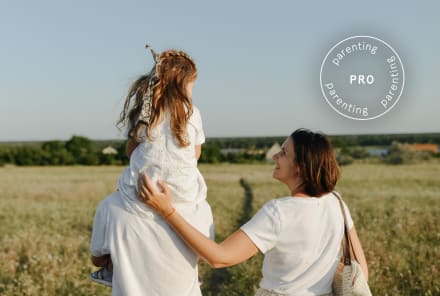Advertisement
6 Problems With The Love Languages, From A Couples Therapist

Jeff and Leigh were going to try couples counseling one more time before they split; although they wanted their relationship to work, they could not stop the ongoing conflict and arguments.
As we opened our session, Jeff burst out with, "We have read The Five Love Languages 10 times. I know she likes words, and I give them to her even though it's hard for me—cards and conversations when I don't feel like it and even Post-it notes in her backpack. Still, it seems she constantly finds fault with me. Nothing is ever enough."
His partner Leigh, just a breath away from outrage, responded, "Yes, you do all of that. I work on practicing your love language for you; I'm always finding ways to touch you—holding your hand, rubbing your neck. But when I need to talk about something that is bothering me, you defend yourself before I can even get the words out."
It was obvious that these two people had read The Five Love Languages: The Secret to Love That Lasts by Gary Chapman and taken his wisdom and suggestions to heart, and like many people, they believed his formula would cure their many relationship troubles.
The problem with the love languages.
Chapman's book was first published in 1995, and even 20 years after its initial publication, it remained in the top 20 books on Amazon and has been a New York Times bestseller for eight years. But fast-forward two decades, and it seems many people have lost sight of some of the original wisdom interlaced throughout this nuanced philosophy. This lack of attention to the details can oftentimes lead to an ineffective application of its teachings.
According to Chapman, the five love languages are words of affirmation, quality time, acts of service, physical touch, and gifts. His book on the love language theory addresses one of the most important aspects of a healthy relationship, which is the understanding that "my partner is not me." One of the great lessons love teaches us is the ability to really see our partner as "other" and find ways to understand and make room for someone who is not like us. Chapman encourages efforts to speak love in our partner's language, not ours, and to give not what we want but what our partner wants.
This useful information is an essential part of any couple's tool kit for skillful loving. But there are many things people tend to get wrong about the love languages.
The love languages can get used for scorekeeping.
Jeff and Leigh used "all they do" for each other in their opening argument with me, which is a prime example of the competition couples can get into over "who does more." All the beauty that comes with learning to speak each other's love languages gets erased when we get competitive about it.
When we turn the love languages into an exercise in scorekeeping, it just becomes yet another addition to the ongoing issue many couples face about who does more overall for the relationship. They'll look at who does the cleaning, cooking, moneymaking, child care, planning vacations, initiating sex, making up after an argument—and may fall into the trap of adding practicing their partners' love languages the most to that list.
Love languages can change.
Active listening is an essential part of any healthy relationship. Our love language can change over time and in specific life situations. If we don't know how to not just speak to each other but also how to really listen to each other, we may be engaging in behaviors that no longer say "I love you" but now irritate instead. An ongoing dialogue with sound communication skills is essential to using the love languages theory successfully.
Love doesn't only have to be given to us by others.
Chapman describes an inner love "tank" that we're always working to keep full, proposing that our "misbehavior, withdrawal, harsh words, and critical spirit occur because of that empty tank." This doesn't mean we need to wait around for our partner to make us feel good.
While we can of course fill that tank for each other by bestowing our partners with small acts of love, we know that to be truly fulfilled, we need first to fill our own tank. Do you use words of affirmation, gifts, touch, and quality time with yourself?
The love languages are not a universal salve.
Learning to speak each other's love languages won't remedy toxic behaviors, nor will they remedy an issue once it's emerged. Although a lot of disagreements between couples can be linked back to miscommunication or a lack of communication, not all problems have to do with how much or how well we're talking to each other.
The No. 1 issue I see with couples is what I call "infinity loops." Leigh feared disconnection, so she interpreted Jeff's natural introversion and bookworm nature as a rejection of her. When she was triggered by him reading the newspaper when she wanted to talk, she went into her old pattern of criticism and tried to get his attention. "You always disappear," she would say, so he would protect himself by withdrawing, which made her feel more abandoned. Then she criticized more, and off they went in this loop.
Giving gifts, words, or acts of service doesn't address this core issue or stop the spiral.
Love languages can get used as a quick fix.
Love languages are a style of communication, a way to go about the day-to-day with your partner in a loving way. They teach us how to talk to our partners in stressful situations—but they don't tell us what comes next.
For example, the most painful problem couples have is that they lose one another; at the heart of most fights or withdrawal is a small, sad feeling of losing one's best friend and a little voice wondering, "Where did you go?" This requires another skill to soften, repair, forgive, and find our way back to each other.
People love the idea of a quick fix, but the human condition (which doubles in complexity within the context of a long-term relationship) doesn't have a quick fix. A relationship requires an entire tool kit, not just a single tool. Alongside touch, quality time, words, and service, they also need honesty, trust, shared goals, and ways to repair and reconnect after the inevitable conflicts.
The love languages won't fix underlying issues.
Understanding the love languages can teach us a lot about relationships, but they won't fix everything. While Chapman gives us one of the components of successful loving ("you are not me"), it is not the ultimate answer, nor the only factor, in this equation. Love languages are not the only element of a successful relationship.
Jeff and Leigh became aware of the dynamics they were each bringing to their ongoing power struggle. Jeff discovered that the feeling that he could never do enough had begun when he was very young. Leigh's tendency to blame as her first response to her hurt feelings was an old strategy, which she discovered had as much or more to do with her than it did Jeff. They began to do the inner repair work within themselves. Each person bringing this empathy to the relationship is what began to heal it.
The bottom line.
Acts of kindness, seeing our partner as different, and listening to what they need and want are essential skills of making any relationship thrive. These skills are part of what sustains the relationship in the harder seasons. While Chapman's theory helps to explain how to best make a relationship thrive, they are just one part of what makes a successful relationship overall.
A flourishing relationship begins with the mindful practice of knowing our own inner landscape and how to bring a healthier, clearer, more receptive, and more mature self to all our relationships, especially our most intimate ones.
Watch Next
Enjoy some of our favorite clips from classes
Enjoy some of our favorite clips from classes
What Is Meditation?
Mindfulness/Spirituality | Light Watkins
Box Breathing
Mindfulness/Spirituality | Gwen Dittmar
What Breathwork Can Address
Mindfulness/Spirituality | Gwen Dittmar
The 8 Limbs of Yoga - What is Asana?
Yoga | Caley Alyssa
Two Standing Postures to Open Up Tight Hips
Yoga | Caley Alyssa
How Plants Can Optimize Athletic Performance
Nutrition | Rich Roll
What to Eat Before a Workout
Nutrition | Rich Roll
How Ayurveda Helps Us Navigate Modern Life
Nutrition | Sahara Rose
Messages About Love & Relationships
Love & Relationships | Esther Perel
Love Languages
Love & Relationships | Esther Perel











